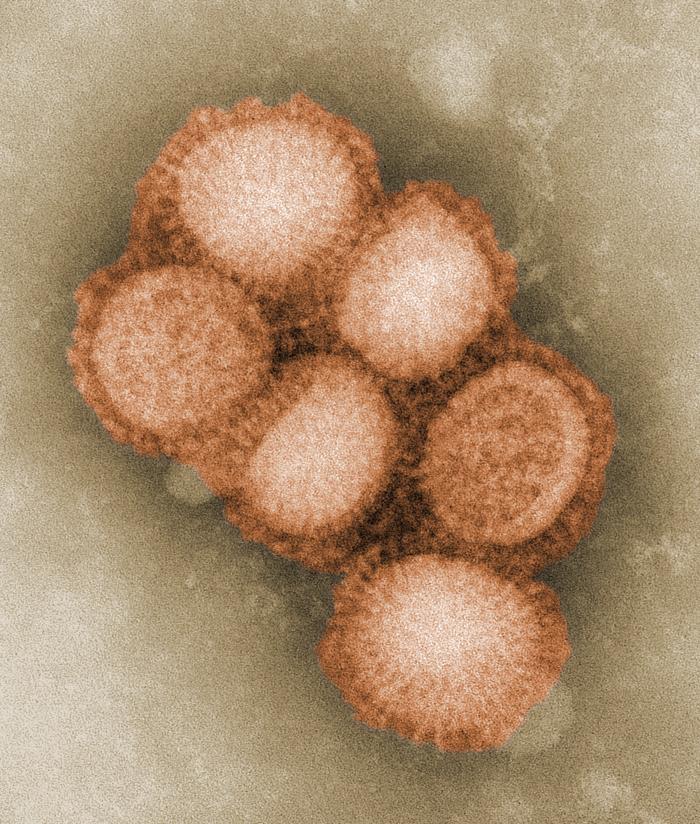| Description | Participants | Summaries | Products | Feature |
|---|
NIMBioS Working Group: SPIDER
Scientists Examine Human Behavior and the Threat of Disease
May 11, 2009
 |
| Photo Credit: C. S. Goldsmith and A. Balish, CDC |
As swine flu spread from Mexico to Texas and then fanned out farther in the United States, Americans began to alter their behavior. Families kept children home from school, postponed trips to the mall, and stayed home instead of eating out. In so doing, the American population may have inadvertently altered the behavior of the pathogen itself.
How human behavior changes the spread of emerging infectious diseases, and how the spread of disease simultaneously changes human behavior, were among the topics discussed by scientists at a meeting at the National Institute for Biological and Mathematical Synthesis (NIMBioS) on the University of Tennessee campus, June 7-9.
Ecologists, epidemiologists, economists, and mathematicians comprise a NIMBioS Working Group to tackle the topic, Synthesizing and Predicting Infectious Disease While Accounting for Endogenous Risk or SPIDER.
Accounting for endogenous risk means jointly considering how human behavior influences disease and how disease influences human behavior, explained Eli Fenichel, working group co-organizer and assistant professor at Arizona State University. "When people perceive risks, they alter their behavior, which in turn, alters the risk. It's a feedback loop between people, the pathogen, and the risk."
Most current attempts to model the risks of emerging infectious diseases look at the disease itself and human behavior. The SPIDER Working Group aims to build on that classic view by also considering the economic impact of human decisions about risk.
"Epidemiological science has gotten good at modeling and projecting risk. The next major frontier is how do we manage risk in a cost effective way," Fenichel said. "It's a way of thinking about how resources get allocated to address emerging pathogens like the flu now. For example, if we believe that people will behave in a certain way given certain information sets, we might be able to find better ways to distribute medicine."
Another avenue for investigation is how the global food trade system would be affected if it becomes the source of a pathogen, Fenichel said. "One of the questions is how do we set up inspections in a cost effective way if we cannot reasonably inspect everything. We need to look at how to best balance the risks and the costs."
The group aims to develop predictive models to forecast the risks associated with emerging infectious diseases in humans, livestock, wildlife, and plants, and to collaborate in developing risk management strategies.
NIMBioS Working Groups are comprised of 10-15 invited participants and focus on specific questions related to mathematical biology. Each group typically meets two to three times over the course of two years at the Institute.
The National Institute for Mathematical and Biological Synthesis (NIMBioS) brings together researchers from around the world to collaborate across disciplinary boundaries to investigate solutions to basic and applied problems in the life sciences. NIMBioS is funded by the National Science Foundation in collaboration with the U.S. Department of Homeland Security and the U.S. Department of Agriculture, with additional support from The University of Tennessee, Knoxville.
For more information, contact Catherine Crawley at 865-974-9350 or ccrawley@nimbios.org
NIMBioS
1122 Volunteer Blvd., Suite 106
University of Tennessee
Knoxville,
TN 37996-3410
PH: (865) 974-9334
FAX: (865) 974-9461
Contact NIMBioS


